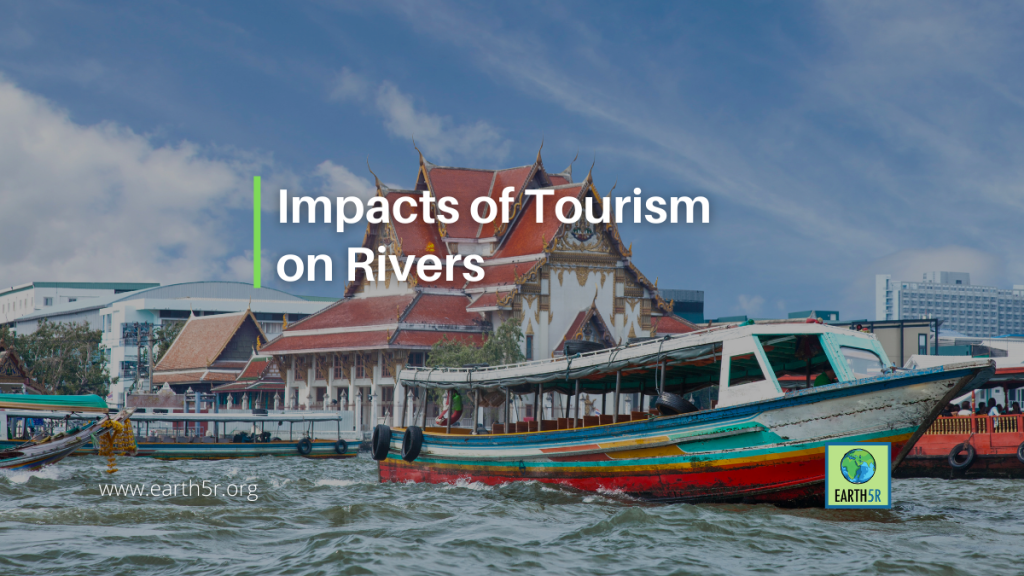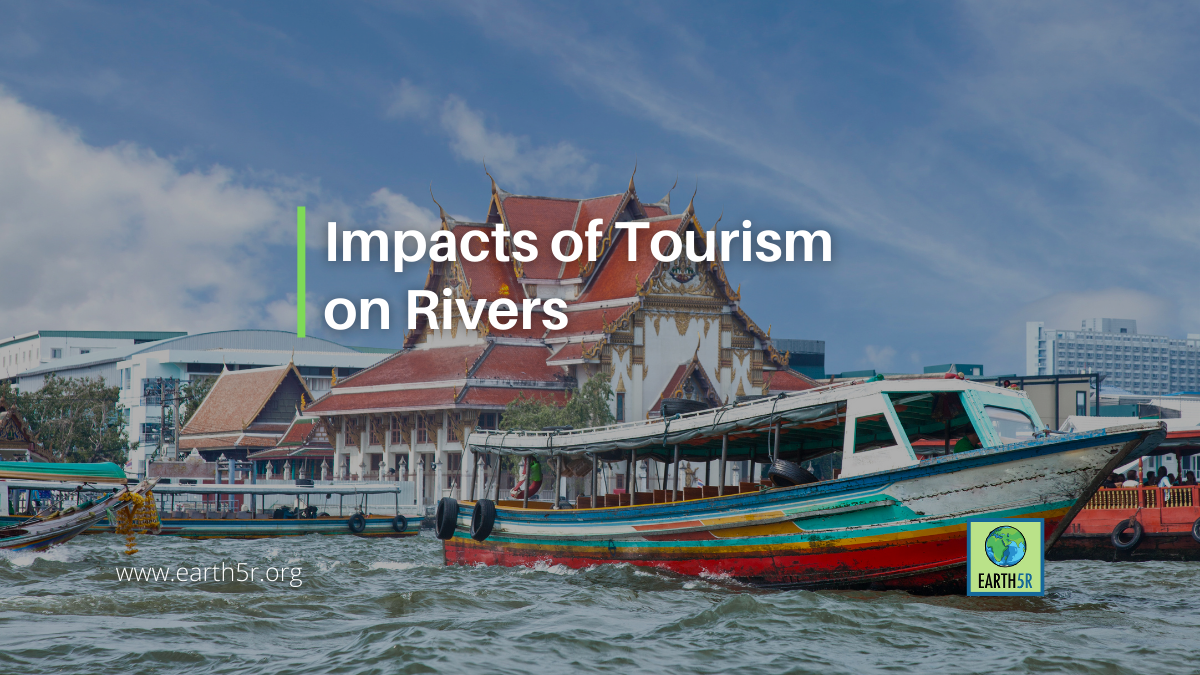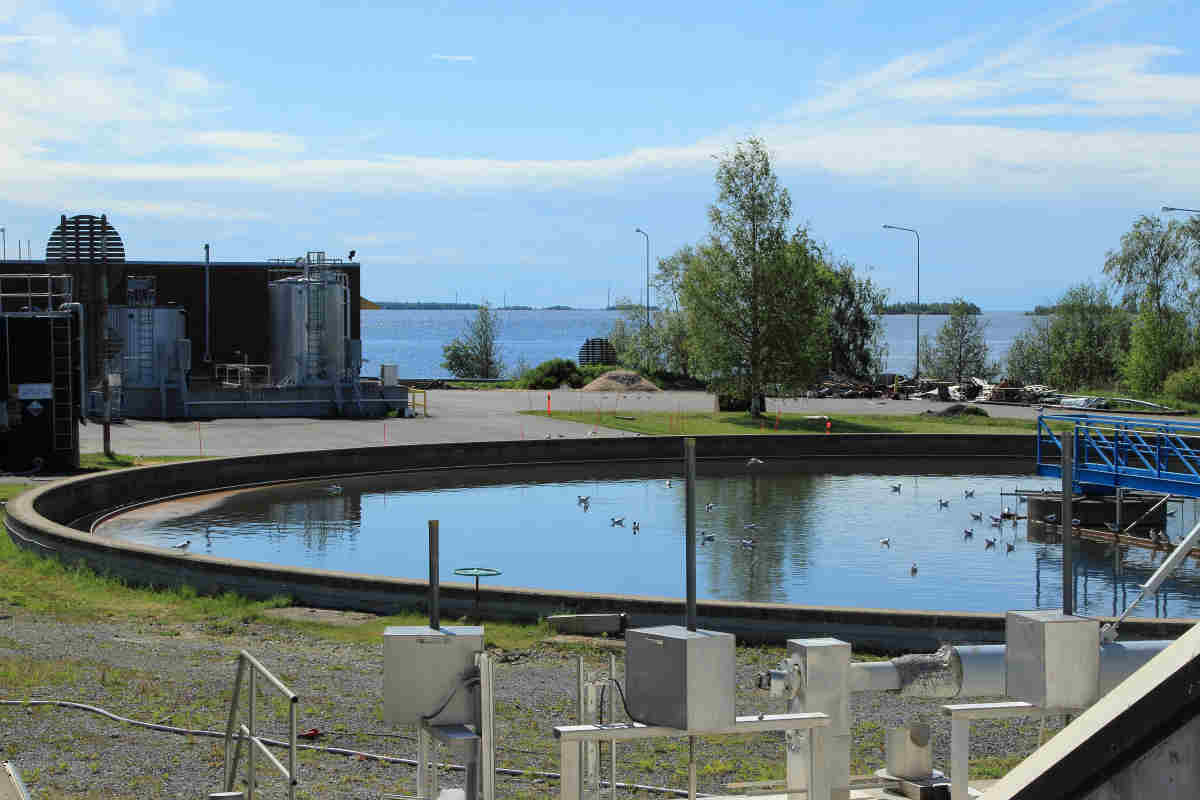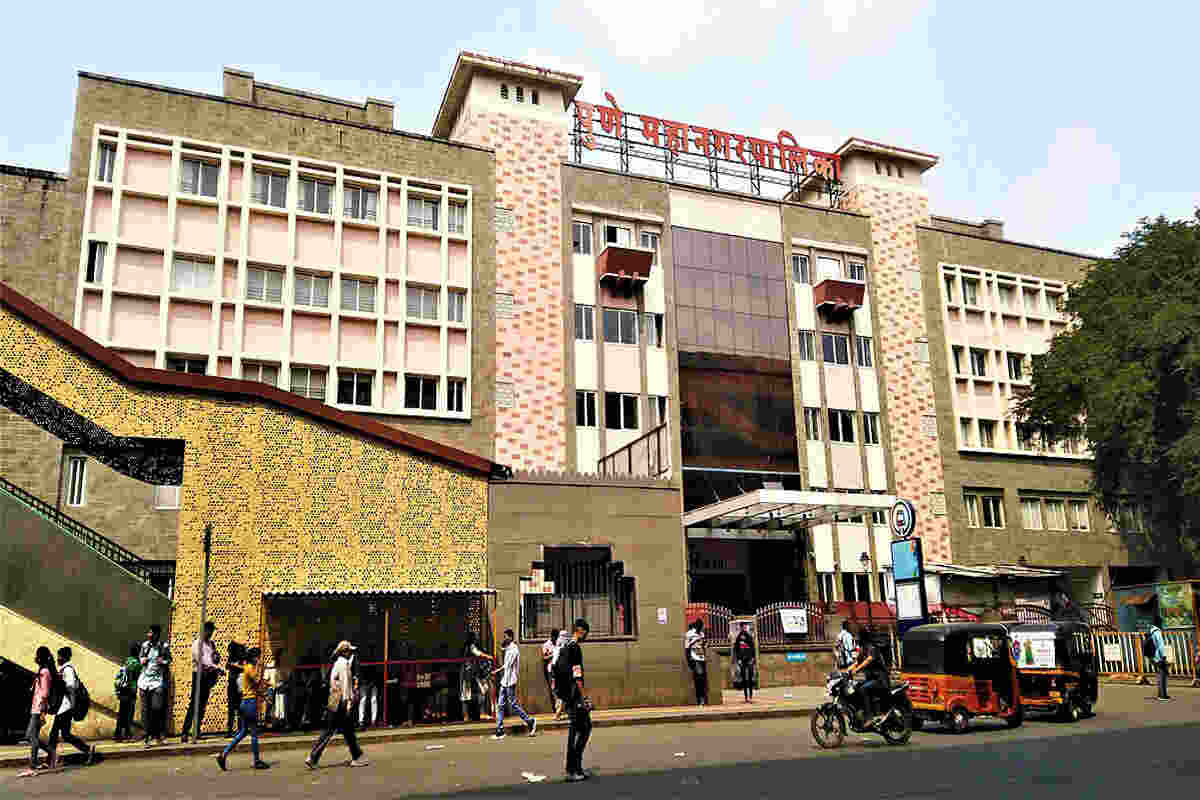
Impacts Of Tourism On Rivers
We travel to new places for many reasons: to meet new people, experience new cultures, and see some of the most beautiful sights in the world.
But have you ever wondered how your travels affect the local environment?
The ocean is one of the biggest recipients of the negative impacts of tourism. Our fun marine-based vacations can have devastating effects on marine life.
In many ways, the attitude towards the ocean is “out of sight, out of mind.” But the sea does not work this way. As an extensive interconnected system, the negative impacts that have been concentrated in hot tourism areas will start to be felt globally and locally.
Travel has gradually become a significant choice for most people on holidays, and the tourism industry has also developed rapidly. One of the purposes of travel is to relax, so the choice of tourist destinations is often those places with a beautiful environment.
Tourism that takes water resources as the development subject. The water environment is more easily affected by human tourism activities; therefore, it is more necessary to control the pollution degree of the water environment to ensure the normal development of tourism.
Positive Impacts
- HIGH-QUALITY RESIDENTIAL ENVIRONMENT
According to the World Tourism Organization Figures, the most significant number of travelers relate to the river tourism sector. The ever-popular beaches and the widespread demand for them, along with the fragile structure of these environments, have made planners more aware of sustainable development in these areas. To achieve sustainable tourism to preserve the economic benefits, promote tourism, and protect environmental resources. River stripes are the spaces that often have unbreakable links with surrounding areas and town centers. These areas are the center of the accumulation of most human activities, including trade, commerce, energy, fishing, housing, and tourism. Tourism has improved the life quality of the citizens.
- QUALITY OF HEALTH AND LEISURE
The increasing number of tourists is caused by improving people’s living standards, which is hard to inhibit.
- ECONOMIC BOOM
The growth and development of tourism Activities can Lead to profound changes in many objective and subjective indicators, macroeconomic, social, Cultural, and Environmental characteristics Of the communities.
The number of tourists also brings economic income growth, making the government pay more attention to the economic benefits and ignore environmental protection.
- CREATING NEW EMPLOYMENT OPPORTUNITIES
The development of tourism in cities will increase job creation and job diversification and create jobs that are highly dependent on tourism.
Negative Impacts
In the tourism industry, to improve the comfort of tourists in the process of tourism, the environment will be transformed to different degrees, and tourists will also produce different levels of pollutants in the process of tourism. The water environment in the natural environment is relatively easier to be affected by human activities. Once the water environment is polluted, the aquatic organisms are the first to be involved. Then, the land environment near the water environment watershed will affect the growth of surface organisms. If not prevented, the unsustainable development of tourist attractions will eventually lead to exhaustion of tourism resources and stagnation of tourism development.
But it doesn’t stop there,
- COASTAL DEVELOPMENT
Thousands of people flock to coastal areas’ warm, sunny beaches every year. It’s only natural…we want to dig our toes into the hot sand and splash in the warm waves.
In Europe, these are essentially areas like Majorca, Ibiza, the south of Spain, coastal Portugal, Croatia, and the Greek Islands.
There are several ways that the coasts of these regions are changed to meet the high demand of tourists that come and visit. Many of these are incredibly detrimental to the local ecosystems.
- FOREST CLEARINGS
In coastal areas, it’s not uncommon for entire mangrove forests to be cleared away for a resort. This destroys the homes of many kinds of fish and removes the natural protection that the coast has from ocean storms.
Instead of these “inconvenient” trees, golf courses are installed and built artificial coastlines with restaurants and hotels. While they are fun for us to visit, their impact is lasting.
- CORAL REEFS
Coral reefs, like mangrove forests, can also be severely damaged to build coastal tourist attractions.
In Curacao, for example, the construction company Bam is suspected of dragging anchors across a protected coral reef to clear a path for the supporting feet of the pier.
Coral reefs are highly fragile and diverse ecosystems. The coral itself is a living animal, and the reefs provide homes for thousands of different kinds of animals. This sort of destruction ultimately leads to significant biodiversity loss in an area.
- EROSION
A significant impact of the human development of coastlines is erosion. Our tourist attractions are worse off for their locations in the long run.
While erosion is a naturally-occurring process, human development speeds it up. For example, without the natural protection of coral reefs and mangrove forests, the land has no protection against eroding forces.
Repercussions Of Tourism On Water Quality Of River Ganga In Lower Himalayas
Festivals are significant and heartiest to every person in India. During festival seasons, many people come to Ganga Snans to cleanse themselves. After death, the people dump their asthia in the Ganga River; it is a tradition of India because they think that Ganga gives Mukti from the human world.
A large proportion damps the solid and liquid wastes in the Ganga river, like domestic usage (bathing, laundry, and public defecation), Sewage wastes, and unburnt dead bodies through in Ganga river. Patna and Varanasi cities are more responsive to water pollution in Ganga, and 80 % of sewage wastes are responsible for the water pollution of Ganga.
Comparing water quality between pre and post-religious activities during Kanwar Mela shows the higher water pollution in the Ganga River water due to massive gathering of pilgrimages. It is recommended that an appropriate strategy to reduce and control the waste of religious-touristic activities in the Haridwar region and to found Pilgrimage tourism as Eco-Pilgrimage
Cruise Ships
Tourism significantly influences water pollution, but a huge source is from cruise ships.
These ships, which are a popular vacation choice for many, dump a lot of waste into the ocean every year. Often they travel into international waters to do so. In these unregulated areas, they’ll dump the untreated sewage waste of the thousands of people on board.
This adds up quickly. In 2014, that number was around one BILLION gallons of sewage. Even the “eco-friendly” cruise ships are failing. NABU—a German environmental group—ranked European cruise companies in 2017 for their environmental impact…and found that they could not recommend a single company for travel with.
Cruise ships are also significant pollutants in other ways. Many use heavy fuel oils to power their small cities, and very little is being done to offset the effects of burning those oils. As Andrew McMaster writes for GlobalCitizen.org: “To make matters worse, many of the companies operating the vessels have failed to install soot filters that would at least marginally improve the environmental impact of their massive fuel combustion.
Filters would help capture some of the fine particulates released when the diesel engines burn fuel, preventing them from escaping into the atmosphere. However, none of them is operational of the 23 ships that the industry claimed would be equipped with this technology.”
Now that we’ve established that cruise ships are dumping waste into the oceans, it’s worth exploring what this means for the environment.
- UNTREATED EFFLUENTS FROM CRUISE SHIPS
If you’re researching water pollution, you might run across the word “effluents.”
Effluents are untreated streams of waste that flow into our natural water and airways. Smoke, liquid sewage, and other polluting material are examples of these environmentally-detrimental substances. Cruise ships are significant producers and distributors, but they aren’t the only ones.
Effluents have a lot of negative consequences for local waterways and oceans. They cause pollution, reduce animal life, and damage human and animal communities. They ultimately reduce the beauty of the natural landscape and pollute the local communities.
- EUTROPHICATION
As effluents are dumped into waterways, one of the biggest problems experienced is eutrophication: the ultra-high concentration of nutrients like nitrogen and phosphorus in a body of water. This results in a massive blooming of algae, covering ponds and streams that used to be clear with a layer of “scum.”
- BLOCKED SUNLIGHT
When algae cover a vast surface area of a body of water, it can lead to devastating effects on the life underneath the surface. Often the first stage of this is blocked sunlight.
Although they are underwater, plant life beneath the surface still requires sunlight to grow and flourish. Vast blooms of algae can effectively cut off the access to sunlight that these plants need, causing them to die.
These plants provide several essential functions to the underwater ecosystems, such as:
- Providing shelter for underwater life
- Serving as food for fish and aquatic animals
- Moderating nutrient levels
- Limiting erosion
- Oxygenating the water
Without aquatic plants, there is no filtration system for a body of water. This means that toxic chemicals from sewage are more easily absorbed, and biodiversity begins to disappear quickly.
- OXYGEN DEFICIENCY
Another adverse effect of not having plants in a body of water is oxygen deficiency. This is only exacerbated by the oxygen-sucking algae living on the surface.
As oxygen sources deplete, more and more marine life begins to die. As the fish and other living organisms begin to decompose underwater, they use up even more of the little remaining oxygen! Ultimately, a vicious cycle results in water with no marine life.
- INTRODUCING PATHOGENS
Effluents also introduce pathogens to bodies of water. Pathogens—broadly defined as anything that can cause disease—affect marine life, yes, but they also spread into the human populations of the local areas.
When untreated wastewater is dumped into our oceans, rivers, and streams, it eventually leaks into our drinking water resources. Though not caused by tourism directly, this Australian region is suffering the effects of fecal contamination from cattle ranching. Residents have been issued ten boil-water alerts in the last ten years alone! It’s a scenario that is not too far from what we will start experiencing because of tourism in the future.
Cruise ships are one of the most significant contributors to the problem of effluents and waste in the ocean, but other forms of tourism impact this, such as coastal development projects. Regardless of the source, though, all tourism will be affected.
10 Most Visited Rivers Known For Their River Tourism
- The Okavango
The Okavango River originates in the highlands of Angola before flowing 1,000 mi (1,600 km) into the Okavango Delta in Botswana. The Okavango stands out among significant river systems because it does not discharge its waters into the sea. The seasonal river flows work their way into the delta and fan out to create an enormous inland floodplain. The result is a tremendous flourishing of plant and animal life. For travelers looking to experience this natural wonder for themselves, Mahango Game Park, located within Namibia’s Bwabwata National Park, is a good choice, particularly for birdwatchers. Other options include safari tours operating out of Botswana. Given the Okavango Delta’s massive size, it’s best to have a guide when exploring this part of one of the world’s most beautiful rivers.
- The Li
The Li River in China is famed for its incredible karst mountains. These spectacular formations result from geological processes eating away at the region’s limestone hills to create some of China’s most picturesque natural scenery. The central river section between Guilin and Yangshuo in northwestern Guangxi Province is the best place to enjoy the Li River. Tour operators abound, and most hotels or accommodations in the area will arrange rafting tours complete with hotel pickups. A popular option is staying in Guilin and traveling by raft downriver to Yangshuo. This section contains marvelous scenery, including the exact spot depicted on the back of the Chinese 20 RMB banknote.
- The Yangtze
The Yangtze River is Asia’s longest river and the third-longest river globally. The Yangtze is a significant source of hydroelectric power. The Three Gorges Dam on the Yangtze is the world’s largest hydroelectric power generating station. Chongqing is a great place to begin a Yangtze River tour as the city boasts arguably the best urban skyline in all of Mainland China. Today, visitors can enjoy some of the world’s most picturesque river scenery.
- The Zambezi
Africa’s fourth-longest river, the Zambezi, is known for its most famous feature, Victoria Falls. The verdant landscapes along the Zambezi support a wide variety of flora and fauna, including hippopotamuses, monitor lizards, buffalo, zebras, giraffes, elephants, and numerous bird species. This helps make the Zambezi one of the best river destinations for nature exploration and wildlife watching. In addition to Victoria Falls, Mana Pools in Zimbabwe and Lake Kariba are the best places to discover the Zambezi, one of the world’s most beautiful rivers.
- The Caño Cristales
Caño Cristales is located in Central Colombia. It is famed for its bright, multicolored riverbed, normally visible each year from July to November. The deep hewed yellow, green, blue, black, and red colors result from the particular plant life that inhabits the river. These vivid aquatic floral displays lend Caño Cristales its moniker as the “River of Five Colors.” Caño Cristales itself is a tributary of the Guayabero River. The rich natural landscapes along the Caño Cristales are a significant part of what makes the river so unique. Laying at the confluence of three major ecosystems, including the Amazon rainforest, Caño Cristales is home to many plant and animal species, many of which have adapted to thrive in the region’s varying climate conditions.
- The Colorado
Originating in the Rocky Mountains in the US State of Colorado, the Colorado River flows southwest through Utah, Arizona, Nevada, and California before crossing into Mexico and draining into the Gulf of California. Colorado is the principal water source for much of the Southwestern United States, including major population centers like Los Angeles. It is ideal for boaters, rafters, and anglers. The river is known for its impressive rapids, spectacular natural scenery, and some of the best fishing waters in the entire United States. River rafting is extremely popular along much of the Colorado River, and various white-water tour operators offer package deals on some of the more challenging and exciting rapids. The Desert Southwest ranks among the most picturesque natural landscapes anywhere in the United States, and the Colorado River is critical to the entire ecosystem.
- The Futaleufú
The Futaleufú is a glacial-fed river that originates in Patagonia in Argentina, flows through the Southern Andes, and empties into Yelcho Lake in Chile. The Futaleufú is renowned for its numerous rapids along the Chilean stretches. Several major whitewater events are held on the river each year. Famed for its stunning turquoise waters, the Futaleufú isn’t just a destination for adventure sports; it’s also ideal for outdoor enthusiasts, especially fly-fishers, kayakers, trekkers, and hikers. The river’s headwaters are located in Argentina’s UNESCO-protected Los Alerces National Park. Patagonia is a stunningly beautiful region with lots to offer, including picturesque towns, a welcoming culture, and delicious foods.
- The Ganges
The Ganges is one of the most famous rivers in the world. The volume of water that flows through the Ganges makes it a lifeline to millions of people who depend on it for their daily needs. The Hindu faithful consider the Ganges sacred and worship the river as the goddess Ganga. Varanasi is an important place of pilgrimage for Hindus. Each year millions venture there to bathe in the Ganges. The river’s sacred waters are a source of spiritual purification, thought to carry away sin.
- The Rhine
The Rhine is one of Europe’s most important rivers and one of the most beautiful. Originating in the Swiss Alps, the Rhine flows through several major European cities before emptying into the North East. River cruises are a popular way to explore the Rhine, as the Danube. These vivid aquatic floral displays lend Caño Cristales its moniker as the “River of Five Colors.” Caño Cristales itself is a tributary of the Guayabero River. The rich natural landscapes along the Caño Cristales are a significant part of what makes the river so unique. Laying at the confluence of three major ecosystems, including the Amazon rainforest, Caño Cristales is home to many plant and animal species, many of which have adapted to thrive in the region’s varying climate conditions.
- The Danube
Along with the Rhine, the Danube is arguably continental Europe’s most famous river; the quaint landscapes have a magical quality that perfectly complements a relaxing cruise along with one of the world’s most beautiful rivers. Danube River cruises rank among the most enjoyable European vacation options and are a fantastic way to experience the beauty of the Danube. The Hungarian capital, in particular, offers visitors stunning river views and unique architecture, including the Hungarian Parliament Building, Fisherman’s Bastion, and the famous Chain Bridge.
HOW WE CAN CHANGE
Often we as consumers don’t see the negative side of how our travels affect marine life and ecological systems. But there are ways that we can change our lifestyle and travel choices for the better. As the need for environmental sustainability grows, public opinion and political decisions are also shifting.
Over the years, the Earth5R team has accomplished several clean-up drives on the banks of rivers.
Clean-up Drive at Mithi River Banks, Bandra Kurla Complex (BKC)
This clean-up drive aimed to prevent the plastic waste lying on the river banks from entering the river. The team collected more than 20 kilograms of plastic waste. In the end, the collected waste was donated to the ragpicker Mr. Ravir. The purpose of donating it to him was to break the chain of waste dumping into the landfills. Mr. Ravir would further segregate the waste and sell it to the recyclers generating livelihood for himself.
The healthy development of tourism balances environmental production, material production, and human production. Material production in tourism refers to tourism development based on the use of tourism resources in the natural environment and waste generated in the development process; human production in tourism refers to human tourism activities, economic benefits, and pollutants developed in the process; and environmental production in the tourism industry, especially the tourism with water environment as the selling point, refers to the water environment capacity for pollution and the provision of tourism resources under the natural and human influence.
For more articles like this, please visit https://earth5r.org/
Sources:
Impact of tourism activities on water pollution in the West Lake Basin (Hangzhou, China)
Repercussions of tourism on water quality of River Ganga in Lower Himalayas



